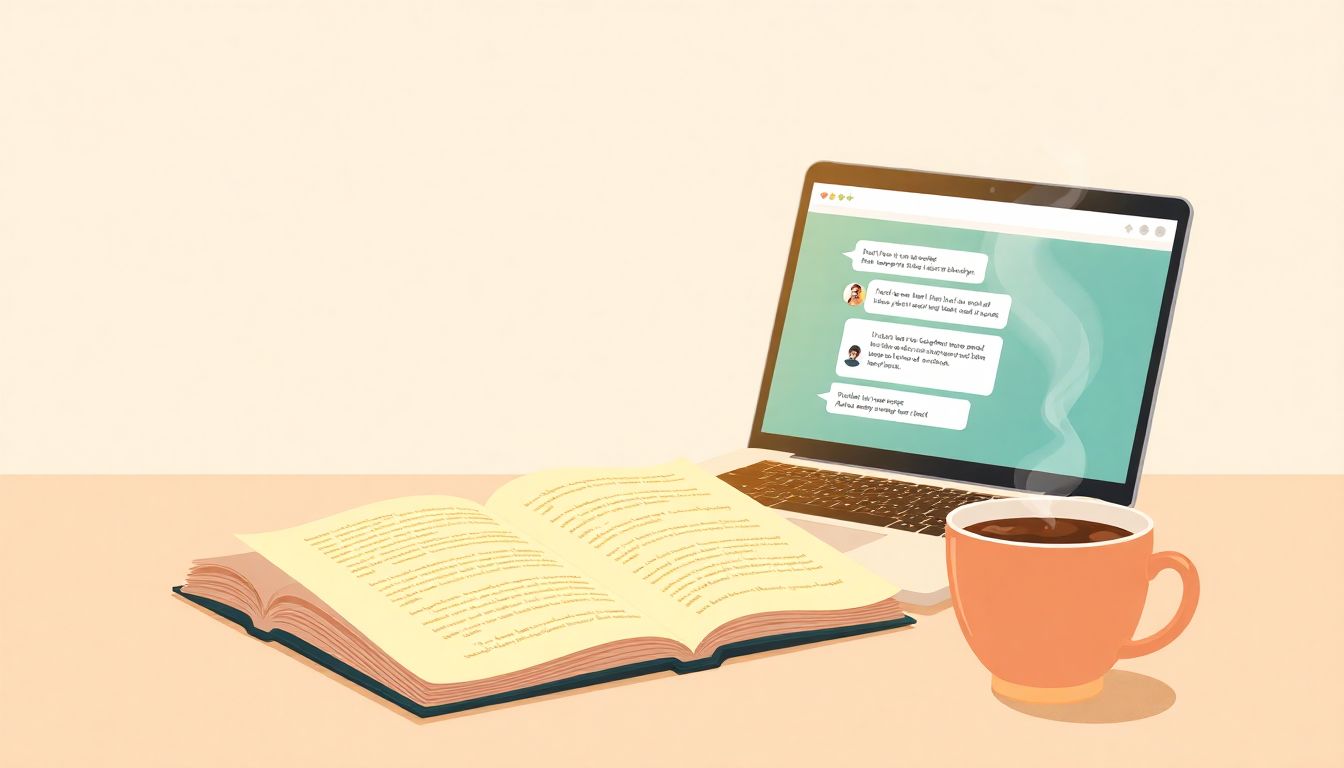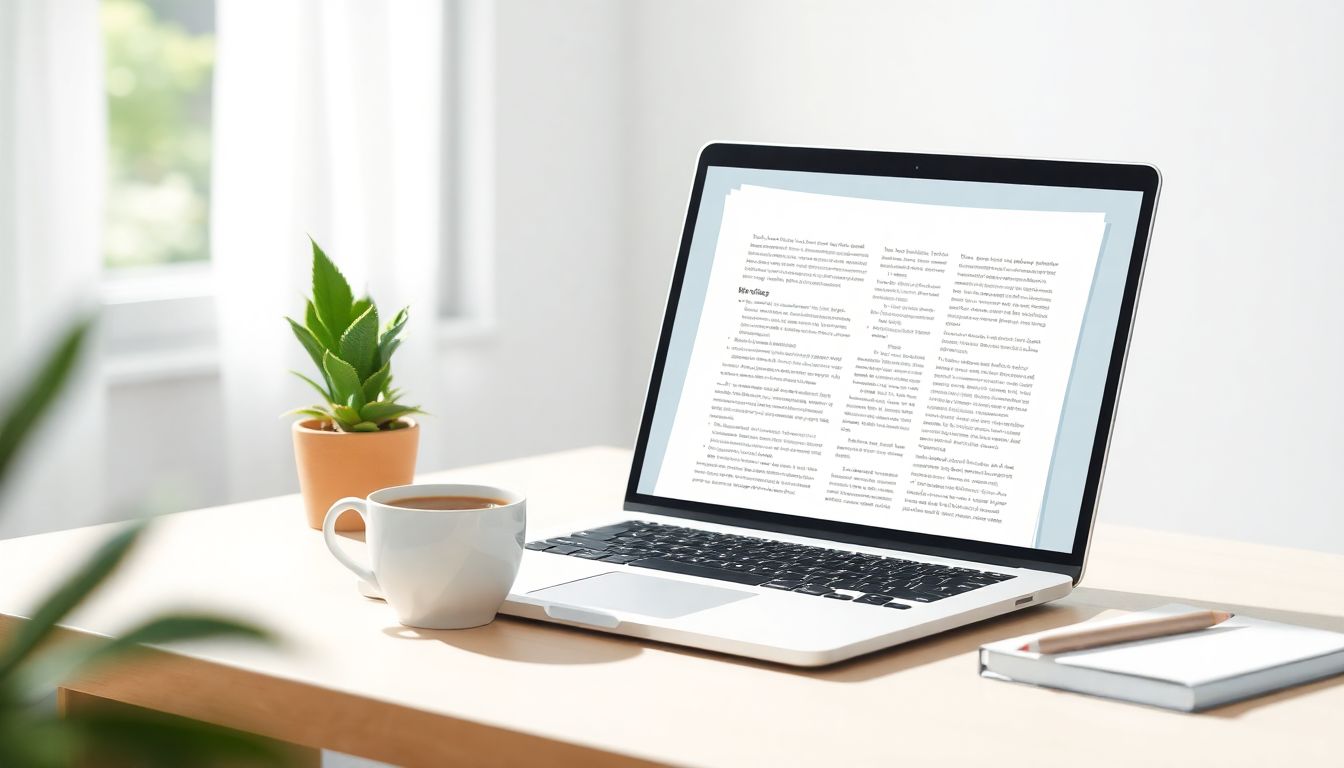Proofreading and checking grammar can feel like an endless battle, can’t it? You write your heart out, only to discover pesky typos and awkward sentences lurking in the shadows. You’re not alone—many writers face the same challenge every day.
But what if I told you there’s a way to make this process quicker and easier? By using ChatGPT, you could turn that proofreading nightmare into a breeze. Stick around, and I’ll show you how it can transform your writing while saving you time and frustration.
From step-by-step guides to tips for nailing that perfect sentence, the world of ChatGPT for proofreading is at your fingertips. Let’s dive in and discover how this handy tool can work wonders for your writing!
Key Takeaways
- Using ChatGPT for proofreading is easy: just copy your text, ask it to check for errors, and review suggestions.
- ChatGPT helps improve your writing skills by pointing out grammar mistakes and offering alternatives for clarity.
- Break your text into shorter paragraphs for better feedback from ChatGPT.
- While ChatGPT is fast and effective, always double-check its suggestions for context and nuance.
- It’s a good idea to combine ChatGPT with human feedback for a more thorough editing process.
- Real-life examples show ChatGPT can enhance academic and creative writing significantly.

How to Use ChatGPT for Proofreading and Grammar Checking
Using ChatGPT for proofreading and grammar checking is quite straightforward and effective.
First, simply copy and paste your text into the chat window.
Next, ask ChatGPT to check it for grammar errors and suggest edits.
For example, you can input, “Please proofread the following text and highlight grammar mistakes: [your text here].”
This command will prompt ChatGPT to look for inaccuracies in your writing.
You can also request a summary of corrections, asking, “List the grammar errors and suggested improvements in this text: [your text here].”
Leveraging ChatGPT for proofreading not only enhances your text but also helps you understand grammar rules.
To improve your writing even further, consider asking, “How can I make this text more engaging?”
Benefits of Using ChatGPT for Writing and Editing
One of the main benefits of using ChatGPT for writing and editing is its speed.
The AI can process your text and provide feedback in seconds, saving you valuable time.
Also, ChatGPT can identify and correct multiple errors that you might overlook.
This includes grammar, punctuation, and even stylistic issues that improve overall readability.
Furthermore, engaging with an AI can enhance your writing skills by providing instant learning opportunities.
You can learn from the corrections it suggests and apply those lessons to future writing.
For efficiency, you might find it helpful to say, “What are the most common grammar mistakes in writing?” to deepen your understanding.
Ultimately, ChatGPT helps create polished documents with minimal effort on your part.
Step-by-Step Guide to Proofreading with ChatGPT
Ready to give ChatGPT a go for proofreading? Here’s a step-by-step guide to get you started.
Step 1: Open a chat with ChatGPT and copy your text into the window.
Step 2: Ask it to proofread your work by typing, “Proofread this text for grammar and clarity: [your text here].”
Step 3: Review the suggestions it provides closely.
Step 4: Implement the changes you deem appropriate in your original document.
Step 5: You can further refine your work by prompting, “Can you rephrase this paragraph for clarity?”
Step 6: Save your final draft after you’re satisfied with the edits.
By following these simple steps, you’ll be leveraging AI to enhance your writing effortlessly.
Common Grammar Mistakes ChatGPT Can Help You Fix
ChatGPT is pretty handy when it comes to spotting common grammar mistakes.
Some frequent issues include subject-verb agreement errors, such as “The team are winning” instead of “The team is winning.”
Another common blunder is the misuse of commas, especially in compound sentences.
Typographical errors, like confusing “their,” “there,” and “they’re,” are also easily fixed.
To catch these, you might ask, “Can you point out any subject-verb agreement errors in this text?”
Moreover, ChatGPT can help with clarity by suggesting ways to eliminate passive voice.
When you input, “Make this sentence more active: ‘The ball was thrown by John,’” you’ll see improvements.
Overall, ChatGPT serves as a reliable assistant for identifying and correcting writing mishaps.

Tips for Getting the Best Results from ChatGPT’s Proofreading
To maximize your experience with ChatGPT for proofreading, it’s important to know how to interact with it effectively.
First, always use clear and concise prompts. Instead of saying, “Can you help me?” specify what you need, like, “Proofread this text for grammar and flow: [your text here].”
Break down longer texts into shorter paragraphs when asking for feedback. This will make it easier for ChatGPT to provide detailed corrections.
Make use of follow-up questions based on the feedback you receive. For example, after getting suggestions, ask, “Why is this change important?” to understand the reasoning behind the corrections.
Don’t hesitate to ask ChatGPT to explain grammar rules if you’re unclear about a suggestion. Something like, “Can you explain why this sentence is incorrect?” can offer deeper insights.
Lastly, consider asking for examples or alternatives. A prompt like, “Can you give me an example of a more concise version of this paragraph?” can yield valuable rewrites.
Limitations of ChatGPT in Proofreading and Grammar Checking
While ChatGPT is a powerful tool for proofreading, it does have some limitations you should be aware of.
For starters, it may misunderstand context, leading to suggestions that don’t fit your intended meaning. Always double-check the AI’s recommendations.
ChatGPT can sometimes struggle with nuanced language. It might misinterpret phrases or idioms, resulting in awkward rephrasing.
Furthermore, it lacks a deep understanding of your unique voice and style. What may work for one person’s writing may not suit yours, so it’s wise to take its suggestions with a grain of salt.
Additionally, be cautious with specialized vocabulary or technical jargon, as ChatGPT may not always recognize the intended use.
Finally, remember that while AI is great for catching surface-level errors, it’s not a substitute for a human editor who can provide context and empathy in feedback.
Real-Life Examples of ChatGPT in Action
To better understand how ChatGPT can enhance your writing, let’s look at some real-life examples.
A user once submitted a blog post draft seeking clarity and engagement tips. ChatGPT suggested rephrasing certain sections to make the content more relatable, like changing “utilize” to “use.” The final draft felt friendlier and more approachable.
In another instance, a student used ChatGPT to proofread their essay. It identified awkward sentence structures and offered alternatives that improved flow. The student received a higher grade due to the polished presentation.
One freelance writer employed ChatGPT to refine their pitch for a magazine article. By asking for suggestions on how to make their proposal more enticing, they received actionable advice that led to a successful submission.
These examples show that whether for academic work, creative writing, or professional proposals, ChatGPT can serve as a dependable partner in crafting error-free and engaging texts.
Comparing ChatGPT with Traditional Proofreading Tools
When weighing ChatGPT against traditional proofreading tools, there are key differences to consider.
ChatGPT stands out with its ability to understand context and provide nuanced feedback, unlike many basic grammar checkers that primarily focus on surface errors.
Most traditional tools rely on rule-based grammatical checks, which can miss contextual nuances. ChatGPT, however, uses a conversational approach, adapting suggestions based on the text it analyzes.
In terms of speed, ChatGPT provides instant responses, which is a clear advantage over manual proofreading or even some automated tools.
However, it’s crucial to note that, unlike human editors, ChatGPT lacks the capability for emotional intelligence in understanding the writer’s tone.
Ultimately, the choice between ChatGPT and traditional tools will depend on your specific needs. If you desire a thorough understanding and adaptability in proofreading, ChatGPT could be the better fit.

Conclusion: Making the Most of ChatGPT for Your Writing
Incorporating ChatGPT into your writing routine can significantly enhance your proofreading and editing process.
This tool’s speed and efficiency mean you can quickly improve your text without the delay common with traditional proofreading methods.
Take time to familiarize yourself with its capabilities; the more you use it, the better you’ll understand how to phrase your prompts to get the best results.
To summarize, remember to ask specific questions to guide its responses, break down text for detailed feedback, and double-check suggestions for context.
Ultimately, ChatGPT is here to support you in your writing journey, helping you sharpen your skills while providing a second set of eyes to catch errors.
As you continue to use this AI tool, keep experimenting with different prompts and asking for explanations of corrections to bolster your learning.
ChatGPT is not just a proofreading companion but a writing coach that can help you grow as a writer!
FAQs
To use ChatGPT for proofreading, paste your text into the input box, specify your needs (proofreading or grammar checking), and ask it to provide corrections or suggestions. Review the output and implement the changes as needed.
ChatGPT offers fast, automated proofreading and grammar checks, personalized suggestions, and can help improve writing style. It’s accessible 24/7 and can handle various document types, making it a valuable tool for writers.
ChatGPT can help fix common grammar mistakes such as subject-verb agreement errors, incorrect verb tenses, misplaced modifiers, and punctuation errors. It can also refine sentence structure for better clarity and flow.
While ChatGPT is effective for grammar checks, it may miss nuanced mistakes, context-specific errors, or stylistic issues. It lacks understanding of specific writing goals, so human review is still advised, especially for important documents.
